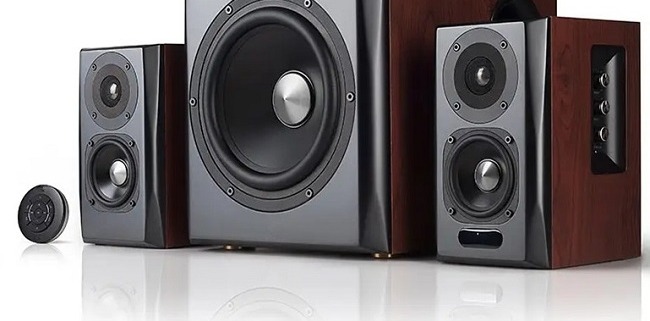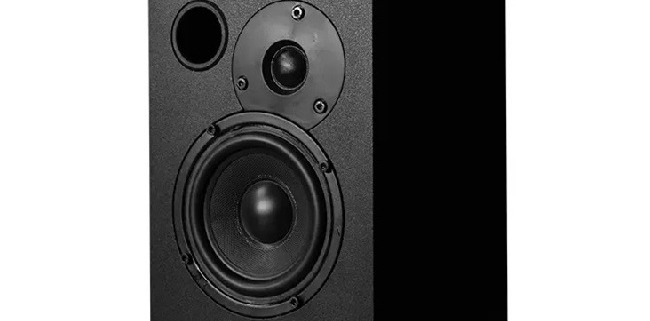Charge a Marine Battery: Step-by-Step Guide
Table of Contents
- Charge a Marine Battery: Step-by-Step Guide
- Understanding Marine Batteries
- Preparing to Charge Your Marine Battery
- Step-by-Step Guide: How to charge a marine battery
- Best Practices for Marine Battery Maintenance
- Conclusion
- FAQ
- Hot Resarch
- Introduction of sound
- The battle between speaker intelligence and sound quality
- Application and development trend of access control system
Marine batteries are the lifeblood of any boat—they power your engine, lights, gauges, and all the essential onboard electronics. Without a healthy battery, your boat is a pretty shell on the water. In this article, we dive into the burning question: how do I charge a marine battery? We’ll explore everything from the ins and outs of battery types to a step-by-step guide on charging. Plus, we’ll compare the advantages of a marine li ion battery with those of traditional marine deep cycle batteries. Let’s get started on this exciting journey to keep your boat powered and your adventures safe!
Understanding Marine Batteries
1. Types of Marine Batteries
Not all marine batteries are created equal. When it comes to powering your boat, you typically have three choices:
- Starting Batteries: These provide that quick, powerful burst of energy to get your engine running, but they’re not built for long-term power.
- Deep Cycle Batteries: Designed for sustained power delivery, these batteries keep your lights, electronics, and other accessories humming for hours.
- Dual-Purpose Batteries: These offer a blend of starting and deep cycle capabilities, which can be handy on smaller vessels with limited space.
Most boaters prefer marine deep-cycle batteries for extended use and reliability. These batteries handle deep discharges better, ensuring their boats stay powered even during extended trips.
2. Battery Chemistry and Technology
Battery chemistry plays a pivotal role in performance and longevity. Traditional chemistries—like lead-acid, AGM, and gel—have long been the go-to options. However, a modern contender is changing the game: the marine li ion battery.
Why choose a marine li ion battery? Because it’s lightweight, lasts significantly longer, and requires minimal maintenance compared to conventional batteries. Think of it as upgrading from an old clunker to an award-winning sports car in the world of batteries. This cutting-edge technology improves performance and enhances safety and efficiency, making it a popular choice among serious boaters.
Learn more about lithium-ion battery technology on Wikipedia.
Preparing to Charge Your Marine Battery
Before you begin the charging process, a little preparation goes a long way toward ensuring safety and efficiency.
1. Assessing Your Battery’s Condition and Type
First, give your battery a thorough once-over. Check its age, inspect for any signs of corrosion, and verify the battery type. Understanding whether you’re dealing with a marine li ion battery or deep cycle batteries is crucial—it influences which charger to use and how you’ll maintain it. A well-maintained battery lasts longer and performs better when you charge a marine battery.
2. Choosing the Right Charger
Next up is selecting the correct charger. You generally have two main options:
- Onboard Chargers: Permanently installed on your boat, these chargers make it super convenient to power up as long as you have access to a standard outlet.
- Portable Chargers: These allow you to charge your battery wherever you are, which is ideal for smaller boats or when space is at a premium.
Make sure the charger you choose matches your battery’s chemistry and voltage. This step is especially important for those opting for a marine li ion battery or deep cycle batteries—using the wrong charger can lead to underperformance or even damage.
3. Safety Precautions Before Charging
Safety should always be your top priority. Here are some key precautions:
- Work in a Safe Environment: Charge your battery in a well-ventilated area and ensure the temperature is within the manufacturer’s recommended range.
- Clean Battery Terminals: Dirty or corroded terminals can interfere with the charging process, so give them a good clean before you connect anything.
- Gear Up: Wear protective gear such as gloves and eye protection to prevent mishaps.
- Follow Manufacturer Guidelines: Always adhere to the specific recommendations provided by your battery and charger manufacturers.
By taking these simple steps, you will ensure your safety and optimize the performance and lifespan of your battery.
Step-by-Step Guide: How to charge a marine battery
Let’s get into the nitty-gritty of charging your boat’s power source. Follow these steps, and you’ll power up like a pro in no time!
1. Cleaning and Inspecting Battery Terminals
Before you plug anything in, clean your battery terminals. Dirty or corroded terminals can prevent your charger from doing its job, and no one wants a slow charge on a hot day!
- Tip: Mix some baking soda with water, scrub gently with a soft brush, and wipe dry.
- Why It Matters: Clean connections ensure that every bit of energy flows efficiently when you charge a marine battery.
2. Connecting the Charger
Now, let’s hook everything up:
- Positive (Red) Cable: Firmly attach this to the positive terminal.
- Negative (Black) Cable: Connect it securely to the negative terminal.
Double-check your connections, whether using a smart charger that adjusts the current automatically or a trusty manual charger. This step is vital, especially when working with a marine li ion battery or marine deep cycle batteries. Once the cables are locked in, plug in your charger and power it up. Easy as pie, right?
3. Monitoring the Charging Process
Keep an eye on your battery as it charges—this is where modern tech shines:
- LED Indicators: These give you a quick look at the charge level.
- Smart Apps & Timers: Many chargers have apps or built-in timers to let you know when you’re full.
By actively monitoring, you prevent overcharging and ensure your battery gets the right amount of juice.
4. Disconnecting the Charger Safely
When your battery is fully charged, it’s time to disconnect—but do it safely:
- Unplug the Charger: Always start by unplugging the charger from the wall.
- Remove the Negative Cable: Disconnect the black cable first.
- Disconnect the Positive Cable: Finally, remove the red cable.
Following this order helps prevent accidental short-circuits and keeps your battery in shape.
Best Practices for Marine Battery Maintenance
Regular maintenance keeps your battery performing like a champ. Here’s how to keep those power levels up!
1. Maintenance Tips for Prolonging Battery Life
- Routine Inspections: Check for any signs of corrosion or wear on the terminals.
- Clean Regularly: A little cleaning goes a long way in ensuring your connections are solid.
- Water Topping: Top up with distilled water when needed for lead-acid batteries.
By following these habits, you’ll always be ready to charge a marine battery and hit the water confidently.
2. Optimizing Charging Cycles
Different batteries have different needs:
- For a marine li ion battery: Enjoy the benefits of minimal maintenance and the ability to handle deeper discharges.
- For marine deep cycle batteries: Stick to regular, shallow discharges to keep them healthy over the long haul.
Tailoring your charging cycle to the specific battery type maximizes performance and extends lifespan.
3. Troubleshooting Common Issues
Even the best-maintained batteries can run into issues. Watch out for:
- Overcharging: This can overheat your battery and cause damage.
- Undercharging: Leaves your battery underpowered.
- Terminal Corrosion: Hinders efficient energy transfer.
If you notice any problems, check your charger settings and ensure you use the right equipment for your battery type.
Conclusion
1. Recap of Key Points
We’ve broken down how to charge a marine battery step by step—from cleaning and connecting to monitoring and safe disconnection. Each stage is crucial for keeping your boat’s power system in peak condition.
2. Final Tips for Maintaining Both Marine li ion battery and marine deep cycle batteries
Whether you opt for the cutting-edge marine li ion battery or the reliable marine deep cycle batteries, proper care and regular maintenance are your best friends. Tailor your charging habits to your battery’s specific needs, and you’ll enjoy award-winning performance on every trip.
3. Encouragement to Follow Best Practices for Reliability on the Water
Stick to these best practices, and you’ll be cruising with confidence. Keeping your battery in prime condition means fewer hassles and more time enjoying your time on the water. Let’s keep those adventures rolling, shall we?
For more detailed battery care tips and industry insights, check out reputable sources like the U.S. Department of Energy or Wikipedia’s battery technology page. Happy boating!
FAQ
1. Can you charge a marine battery with a regular charger?
While you technically can, it’s not recommended. Marine batteries require a charger that matches their specific chemistry and voltage. A regular charger may not provide the proper charging profile, leading to undercharging, overcharging, or even damage over time.
2. What is the best way to charge a boat battery?
The best way is to use a charger specifically designed for your battery type. Follow a step-by-step process: clean and inspect the terminals, connect the positive and negative cables correctly, monitor the charging process using bright indicators, and disconnect safely when fully charged. This ensures efficiency and longevity.
3.What kind of charger do I need for a marine battery?
You need a charger that is tailored to your battery’s chemistry—whether it’s a marine li ion battery or marine deep cycle batteries. Look for chargers with the correct voltage, charging algorithm, and safety features like automatic shut-off and intelligent monitoring for optimal performance.
Hot Resarch
Marine Battery Battery Manufacturer Lithium Battery
Hello
A speaker is a device that restores an electrical signal to a sound signal, and the authenticity of the restoration will be an important criterion for evaluating the performance of the speaker.
According to different sounding principles and internal structures, speakers can be divided into several types: inverted, closed, flat, horn, labyrinth, etc. The most important forms are closed and inverted.
The closed speaker is to install the speaker on the closed box, and the efficiency is relatively low;
The difference between the vented speaker and it is that it is equipped with a circular vent hole on the front or rear panel. It works according to the principle of Helmholtz resonator and has the advantages of high sensitivity, high power tolerance and wide dynamic range. Because the sound wave on the back of the speaker is also released from the phase guide hole, its efficiency is also higher than that of the airtight box. And the same speaker installed in a suitable inverter box will be 3dB higher than the low-frequency sound pressure obtained in a closed box of the same volume, which is beneficial to the performance of the low-frequency part.
So this is also an important reason why the inverter box is widely popular.
In the speaker industry, there are two major technical schools, one is smart speakers focusing on artificial intelligence; the other is traditional sound quality speakers that focus on sound quality.
The two have different emphases due to differences in performance and structure. Smart speakers are developed due to artificial intelligence, and they focus on experience, so sound quality is secondary. If you strip away the built-in artificial intelligence, such products can be called loudspeakers at best. The blessing of artificial intelligence enables such products to recognize human instructions, so as to complete operations such as playing, pausing music, or controlling other smart appliances. It is an interactive platform that integrates music, smart home, online network and one of the products selected as the smart home entrance.
Traditional sound quality speakers are based on sound quality and pay attention to the sense of hearing, so the function is more pure. Taking Soundbar as an example, as a supplement, enhancement or replacement of TV sound quality, the main selling point of such products is to provide users with a more complete listening experience. Soundbar is actually a miniaturized home audio and video. It is a thin and light TV that cannot carry very good speakers, resulting in poor TV sound quality. As a supplement, enhancement or replacement product for TV sound quality, it can be used in a limited volume. It can achieve dual-channel or even multi-channel effects.
As an alternative to TV speakers, the form of external speakers has been changing, from speakers that enhanced the sound quality of TVs to a combination of TV boxes and speakers, the representative of which is Skyworth’s Xiaopai speakers. When this type of product is not connected to the TV, it can be used as a simple speaker. After connecting to the TV through a cable, it can function as a TV box and a speaker at the same time. The Philips TV’s approach is even more extreme. The 973 TV released recently integrates the speakers and the rest of the TV components into a base, which takes into account the thinness of the screen and retains the sound quality. In addition, this type of speaker also has the function of playing music through a wireless network, Bluetooth, cable or interface to connect to a mobile phone or a lossless player.
Although smart speakers and traditional sound-quality speakers are contrary in function, they directly constitute a competitive relationship. Smart speakers rely on ecology and make quick money; while traditional sound-quality speakers are “fine work”. Behind the competition between the two is an attempt to monopolize the standard of the speaker industry. For example, South Korea’s two giants LG and Samsung, LG announced on August 20 that it will expand the “X Boom” product line from existing home audio to wireless and artificial intelligence speakers; Samsung Electronics acquired it as early as 2016. Harman Kardon, an American audio and automotive electronic equipment company, has launched top-level Soundbars around the world. Industry insiders believe that with the connection between TV and smart phones, games, etc., there is a synergistic effect between TV and audio, which has led to the gradual expansion of the speaker market.
The two companies actually represent two different speaker preferences, the trade-off between “smart” and “sound quality.” Compared with the high price of traditional sound quality speakers, the price of about 1,000 yuan for smart speakers is more likely to be favored by consumers, while the low price of smart speakers comes from low cost. However, factors such as low cost and the space occupied by the control module lead to insufficient sounding units for smart speakers. Even most speakers only have one sounding unit, so the sound quality cannot be discussed on smart speakers. Therefore, the selling point of smart speakers is not “speaker” but “intelligent”.
But for many consumers, the sound quality and appearance of speakers are the most essential things to judge the value of speakers, and intelligence may only be a plus. When faced with smart speakers with similar prices and traditional sound quality speakers, the latter is obviously more worth buying. Because smart speakers are only one of the optional entrances to the smart home ecosystem, the option of “smart speakers” is not the only option for smart homes. In order to obtain a better listening experience, it is obviously the sound quality that is more important.
At this stage, “intelligence” and “sound quality” may still be incompatible. Those who have always pursued sound quality have been wandering in more advanced products, but in the mass market, taking into account the intelligence means that it will cost more Efforts to build an ecology and focus on sound quality require spending on raw materials and adjustments. The combination of “intelligence” and “sound quality” means higher costs and a bit further from the mass market.
1. Application of access control system
Application of Access Control System in Office Building
The installation of access control in the company can effectively prevent foreign salesmen and other miscellaneous personnel, ensure the safety of the company and employees’ property, and improve the corporate image. It can improve the work efficiency of the personnel department through the supporting attendance management software, and can flexibly arrange the company’s personnel level or part of the authority to open.
Application of access control system in government office
It can effectively regulate the office order, prevent illegal personnel from attacking government offices, and protect personal safety. Sometimes there are more and more foreign visitors in the office, and the access control system can prevent criminals from stealing information and property. The access control system can also control the access of management personnel under different circumstances through the function of timed tasks, such as the office hall of the Civil Affairs Bureau, the office hall of the Public Security Bureau, etc.
Application of Access Control System in Elevator Control
Connect the access control system with the elevator control, and only authorized users can use it: call the elevator, press the floor; many intelligent communities have been using related equipment more and more, and the control circuit is specially designed for elevator control, forming a proprietary elevator access control Control System.
2. Development trend of access control system
In recent years, due to the popularity of the Internet and smart mobile devices, the application of the Internet of Things in the field of access control has expanded rapidly. The concept of “smart home” began to gradually enter people’s field of vision. In the stage of diversified development, enterprises spared no effort to develop products with core competitiveness. The access control system not only has the basic function of controlling the entry and exit of personnel, but also began to Integrate with other systems, such as video surveillance, building intercom, WIFI probe, security prediction, emergency alarm and other functions. At the same time, in order to meet the needs of customers in different scenarios, major companies have begun to launch customized products and services. From popular access control needs, it has gradually evolved into access control solutions for specific industries.






